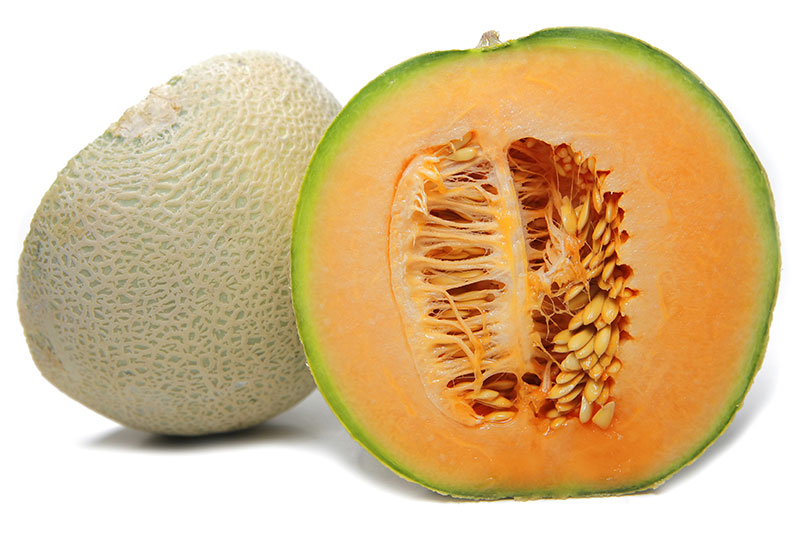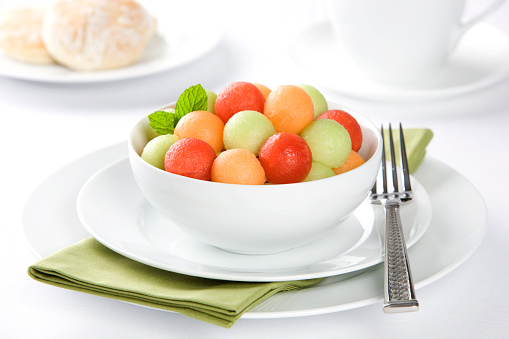Melons, Cantaloupe

Availability:
Year-round
Availability:
| J | F | M | A | M | J | J | A | S | O | N | D |
Notice:
on demand
Receiving/Storage:
Receiving Information: A good quality cantaloupe should be well shaped with good netting or webbing over creamy-colored rind. Tip end should be smooth and slightly depressed. A ripe cantaloupe will have a distinctive aroma and the blossom end should yield to gentle pressure. Avoid shriveled or bruised fruit or cantaloupe with punctured or cracked rinds. Storage/Handling: Pitting and rind decay are indications of chill injury. Bruising may result from rough handling. To prevent bruising, keep handling to a minimum; do not drop containers on the floor. Deterioration of flesh; flesh may begin to deteriorate if ripe cantaloupe is exposed to extreme fluctuations in temperature. To prevent deterioration, keep storage temperature constant. If cantaloupes are going to be used in one or two days, they may be held at room temperature. Otherwise they should be properly refrigerated. Handle ripe cantaloupe with care to avoid bruising. Temperature/humidity recommendation for short-term storage of 7 days or less: 32-36 degrees F. 0 _ 2 degrees C. 90 _ 98% relative humidity.
Description:
Cantaloupe is round and often ribless with a distinctly netted skin. A number of hybrid varieties combine the characteristics of cantaloupe and muskmelon, which causes some confusion when it come to classifying them. Cantaloupes have salmon-colored or orange-yellow flesh, and are often named after the place where they are cultivated.


